Discovering the Power of Pranayama Yoga
In the world of yoga, where the union of mind, body, and spirit takes center stage, a hidden gem lies within the rhythm of our breath. This gem is none other than Pranayama Yoga, an ancient practice that harnesses the art of conscious breathing to unlock profound physical, mental, and spiritual benefits.
At the heart of yoga philosophy, the breath is revered as a bridge between the external and internal realms, a vehicle that carries the life force known as "Prana." This life force is not just oxygen; it's the essence of vitality, the spark of life that sustains us. It's through the inhalation and exhalation of breath that we connect with the world around us and the world within us.
- The Breath's Role in Yoga and Well-being:
In our fast-paced modern lives, we often underestimate the significance of something as simple as our breath. Yet, in the world of yoga, the breath is revered as the cornerstone of practice. Every asana, every meditation, every moment of mindful awareness is enriched and guided by the breath. It's the constant thread that weaves through the fabric of yoga, keeping us anchored in the present moment.
But the influence of the breath extends far beyond the yoga mat. In our daily lives, our breath mirrors our emotions and experiences. When we're stressed, the breath becomes shallow and erratic. When we're calm, it deepens and slows. By harnessing control over our breath, we gain the power to modulate our physiological responses, influencing our heart rate, blood pressure, and stress levels. Thus, the art of Pranayama goes beyond yoga; it's a practice that infuses every aspect of our existence with mindful vitality.
- Pranayama: A Pillar of Traditional Yoga:
To delve into the world of Pranayama is to journey back to the roots of traditional yoga. In the ancient yogic texts, Pranayama is held in high regard, not just as a physical practice but as a key to spiritual evolution. The revered sage Patanjali, in his Yoga Sutras, outlines how Pranayama refines the mind and brings it to a state of focused tranquility. It's a means to prepare the mind for meditation, unlocking higher states of consciousness.
In traditional yoga, Pranayama is not an isolated technique but an integral limb of the eightfold path. Alongside ethical guidelines, physical postures, and meditation, Pranayama is a way to harmonize the body, mind, and spirit. It's a reminder that our breath is a sacred rhythm that mirrors the universe's ebb and flow.
As we explore the depths of Pranayama Yoga in this blog, we'll uncover its various techniques, understand its remarkable benefits, and learn how to infuse it into our modern lives. Just as our breath is a constant companion, Pranayama becomes a faithful guide on our journey toward holistic well-being and self-discovery.
What is Pranayama Yoga?
At the heart of yoga lies a practice that transcends the realm of physical postures and enters the sacred domain of the breath – Pranayama Yoga. This ancient art is the science of breath control, a gateway to harnessing the life force energy within us and achieving profound physical, mental, and spiritual transformation.
- Defining Pranayama Yoga and its Origins:
Pranayama Yoga, a Sanskrit term, is a composite of two words: "Prana" and "Yama." "Prana" refers to the life force energy that animates all living things, while "Yama" means control or restraint. Thus, Pranayama can be understood as the intentional regulation and control of the life force energy through the breath.
- Exploring "Prana" and "Yama" in Context:
Prana: Often described as the universal breath or vital energy, Prana is the essence that permeates every cell, thought, and emotion. It's the force that sustains us, the energy that connects us to the universe. In yogic philosophy, the quality of our Prana influences our physical health, mental state, and spiritual well-being.
Yama: In the context of Pranayama, "Yama" signifies control, restraint, and mastery. It's the conscious manipulation of the breath to guide, expand, and harmonize our life force energy. Through skillful Yama, we can regulate the flow of Prana, creating a profound impact on our physical and mental states.
- The Breath's Role in Life Force Energy:
Imagine your breath as a bridge between your inner and outer worlds, a conduit through which the life force energy flows. Just as a river carries water, your breath carries Prana. By practicing Pranayama, you can influence the quality and quantity of Prana circulating within you. Deep, intentional breaths infuse your body with revitalizing energy, while controlled exhalations release stagnant energy and tension.
- Integrating Pranayama with Asanas and Meditation:
Pranayama doesn't exist in isolation; it's intricately woven into the tapestry of yoga practice. Asanas, the physical postures that often come to mind when thinking of yoga, are deeply intertwined with Pranayama. The breath is the silent conductor guiding the flow of movement and lending each pose its grace.
Likewise, Pranayama serves as a gateway to meditation. Before diving into deep states of mindfulness, yogis often prepare their minds through breath control. The breath becomes the focal point, anchoring attention and quieting mental chatter. In turn, meditation enhances Pranayama, allowing practitioners to explore the depths of their inner universe.
In this journey of Pranayama Yoga, we embrace the symphony of breath, energy, and consciousness. It's a practice that bridges ancient wisdom with modern understanding, offering a holistic path to well-being and self-discovery. As we continue our exploration, we'll uncover various Pranayama techniques and their remarkable benefits, guiding us toward a life infused with mindful vitality.
Unlocking the Multifold Benefits of Pranayama Yoga
Pranayama Yoga, often referred to as the art of conscious breath control, extends its benevolent touch far beyond the mat. This ancient practice gifts us a treasure trove of physical, mental, and emotional benefits that enrich our lives in remarkable ways.
Physical Benefits:
- Improved Lung Capacity and Respiratory Health:
Pranayama is like a workout for your lungs. Through controlled breathing, you expand your lung capacity, increasing their efficiency in exchanging oxygen and carbon dioxide. This leads to better oxygenation of your blood, providing a fresh surge of vitality to every cell in your body.
- Enhanced Oxygenation of the Body's Cells:
As you master Pranayama techniques, you flood your body with a rich supply of oxygen. This oxygen infusion not only revitalizes your cells but also aids in detoxification, promoting the elimination of waste products and supporting overall cellular health.
- Regulation of the Nervous System's Stress Response:
The breath is an intimate connection between your mind and body. When you engage in deep, controlled breathing, you activate the parasympathetic nervous system – your body's natural "rest and digest" mode. This counteracts the often overstimulated "fight or flight" response, reducing stress hormones and promoting a profound sense of calm.
Mental and Emotional Benefits
- Reduction in Stress and Anxiety:
Stress is an unwelcome companion in today's world. Pranayama offers a tranquil refuge. By slowing down your breath and engaging in techniques like "Nadi Shodhana," you create a sense of inner stillness. This soothes the mind, calms the anxious heart, and grants you the power to navigate life's challenges with grace.
- Increased Mental Clarity and Focus:
Your breath isn't just oxygen; it's a conduit for clarity. Pranayama practices like "Ujjayi" encourage focused breathing, grounding you in the present moment. As you inhale and exhale mindfully, mental distractions dissipate, leaving room for heightened concentration and sharper cognitive acuity.
- Promotion of Relaxation and Mindfulness:
In a world of perpetual motion, Pranayama invites you to pause. Techniques such as "Bhramari" and "Sheetali" engage the senses and redirect your awareness inward. The result? A deep sense of relaxation and heightened mindfulness that extends beyond the practice itself, influencing your daily interactions and experiences.
As we embrace the rhythm of breath within Pranayama Yoga, we discover a symphony of transformation. This practice extends an invitation to a life imbued with vitality, resilience, and a profound connection to oneself. In our exploration of Pranayama's diverse techniques, we'll unearth the secrets of these benefits, inviting you to weave them into your journey of holistic well-being.
Scientific Studies about Pranayama
Pranayama is a term that refers to various yogic breathing techniques that can have positive effects on the mind and body. Here are some scientific proofs of the benefits of pranayama, based on the web search results:
- Pranayama can lower everyday stress levels and improve a variety of health factors ranging from mood to metabolism
ↂ.
- Pranayama can stimulate the vagus nerve, activating the parasympathetic nervous system and producing a calming effect on the mind and body
ↂ.
- Pranayama can dampen the genes involved in the inflammatory response, and promote those genes associated with DNA stability and longevity
ↂ.
- Pranayama can reduce anxiety, depression and pain, according to a meta-analysis of 47 meditation trials
ↂ.
- Pranayama can enhance attention, memory and emotional regulation, as shown by various studies using brain imaging techniques
ↂ.
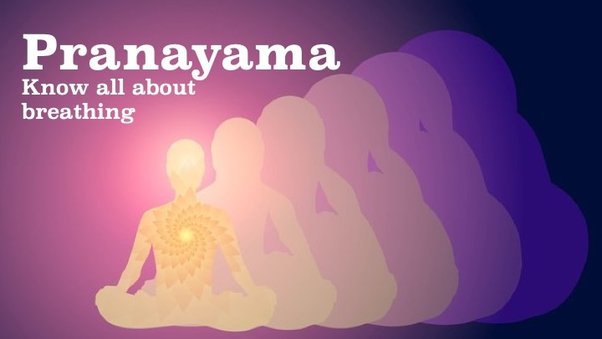 |
| Pranayama Yoga |
Exploring Pranayama Techniques: Breathing Life into Inner Harmony
In the world of Pranayama Yoga, a treasure trove of breathing techniques awaits – each with its unique rhythm and purpose. Let's journey through some of these techniques and uncover their essence.
Ujjayi Pranayama: The Victorious Breath
Ujjayi, often called the "ocean breath," is characterized by a gentle, whisper-like sound created by constricting the back of your throat. This technique not only warms the breath but also brings a sense of victorious energy to your practice.
- Step-by-Step Instructions:
- Find a comfortable seated or lying down posture.
- Close your eyes and relax your face and shoulders.
- Inhale deeply through your nose, slightly constricting the back of your throat to create the ocean-like sound.
- Exhale slowly through the same slightly constricted throat, maintaining the sound.
- Continue this rhythmic breathing pattern, matching the length of your inhales and exhales.
- Gradually extend the length of each breath while maintaining the gentle constriction.
Nadi Shodhana: Alternate Nostril Breathing
Nadi Shodhana, or "channel cleansing breath," balances the flow of energy in your body by alternating nostrils during each breath cycle. It promotes calmness, mental clarity, and a harmonious mind-body connection.
- Step-by-Step Instructions:
- Sit comfortably with your spine erect and shoulders relaxed.
- Using your right thumb, close off your right nostril.
- Inhale deeply through your left nostril.
- Close your left nostril with your right ring finger, release your right nostril, and exhale through it.
- Inhale deeply through your right nostril.
- Close your right nostril again, release your left nostril, and exhale through it.
- This completes one cycle. Repeat for several rounds, focusing on the smooth flow of breath and the transition between nostrils.
Kapalabhati: Skull-Shining Breath
Kapalabhati is an energizing breath that involves forceful exhalations and passive inhalations. It purifies the body by eliminating stale air and toxins, leaving you feeling invigorated.
- Step-by-Step Instructions:
- Sit comfortably with an erect spine and relaxed shoulders.
- Take a deep inhale through both nostrils.
- Exhale forcefully through your nose by contracting your lower belly.
- Allow the inhale to happen passively, as your belly naturally expands.
- Begin with a few rounds of 10-20 rapid breaths, gradually increasing over time.
- After completing the rounds, take a few deep, slow breaths to regain your natural rhythm.
Bhramari: Humming Bee Breath
Bhramari is a soothing technique that mimics the hum of a bee. It calms the mind, reduces stress, and promotes inner serenity.
- Step-by-Step Instructions:
- Sit comfortably with a straight spine and closed eyes.
- Place your index fingers on your ears' cartilage, covering your ear openings.
- Inhale deeply through your nose.
- Exhale slowly while making a humming sound, like the gentle hum of a bee.
- Allow the sound to resonate within your head, focusing on its vibrations.
- Repeat for several rounds, savoring the tranquility it brings.
Embrace the Symphony of Breath:
As you embark on your Pranayama journey, remember that these techniques are not only about breath control but also about connecting with your inner essence. Maintain proper posture, focus on the quality of your breath, and let each technique be a gentle guide toward a harmonious union of mind, body, and spirit.
Harmonizing Breath and Movement: Integrating Pranayama into Your Yoga Practice
Pranayama, the art of conscious breath control, has the power to elevate your yoga practice to new heights. Integrating Pranayama into your routine is a seamless journey that enhances your mind-body connection and invites profound transformation. Here's how to infuse this sacred practice into your yoga journey:
- Begin with a Few Minutes of Deep, Conscious Breathing:
Before you embark on your physical practice, take a few moments to settle into a comfortable seated position. Close your eyes and focus on your breath. Inhale deeply through your nose, expanding your lungs fully, and exhale slowly through your mouth. Allow each breath to be a moment of presence and intention, grounding you in the present moment.
- Incorporate Pranayama Before or After Asana Practice:
Pranayama seamlessly complements your physical practice. If you choose to practice before asanas, consider techniques like Ujjayi to warm up your breath and prepare your body. If you prefer practicing after asanas, opt for cooling techniques like Sheetali or Nadi Shodhana to restore balance and calmness.
- Use it as a Tool for Meditation and Relaxation:
Pranayama becomes a potent tool for meditation. After your asana practice, find a quiet space to sit comfortably. Engage in techniques like Bhramari or Anulom Vilom to quiet your mind and deepen your meditation experience. Let the rhythmic breath guide you inward, allowing your awareness to rest on the sensations of your breath.
Sample Pranayama Sequence for Different Levels
- Start with 5 minutes of deep, conscious breathing in a comfortable seated position.
- Practice Bhramari for 3 rounds, focusing on the soothing vibrations.
- Move on to Nadi Shodhana for 5 rounds, creating a sense of balance.
- End with 2 minutes of relaxed breathing, simply observing your breath without altering it.
- For Intermediate Practitioners:
- Begin with 5 minutes of deep breathing, gradually transitioning to Ujjayi breath.
- Practice Kapalabhati for 2 rounds of 20 breaths each, followed by a deep breath.
- Perform 3 rounds of Nadi Shodhana, embracing the alternating nostril flow.
- Conclude with 5 minutes of meditation, using Bhramari to guide your awareness inward.
- For Advanced Practitioners:
- Dedicate 10 minutes to deep, controlled breathing in a comfortable posture.
- Engage in 3 rounds of Kapalabhati with 50 rapid breaths per round.
- Embrace Ujjayi breath as you flow through a dynamic asana sequence.
- Dive into a 15-minute meditation, alternating between Nadi Shodhana and Bhramari to deepen your concentration.
Remember, the journey of Pranayama is one of self-exploration and growth. As you integrate these practices into your yoga routine, listen to your body's cues and honor its needs. With each inhale and exhale, you weave the breath's symphony into your practice, creating a harmonious melody of well-being, vitality, and inner peace.
Practicing Pranayama Safely: Precautions, Guidance, and Self-Care
As you delve into the world of Pranayama, it's essential to approach the practice with mindfulness and awareness. Pranayama offers a wealth of benefits, but it's important to heed certain precautions to ensure a safe and enriching experience:
Precautions and Contraindications:
- Respiratory Conditions: If you have respiratory issues such as asthma, chronic bronchitis, or other lung-related disorders, it's advisable to practice Pranayama under the guidance of a qualified instructor. Some techniques may need modification to suit your needs.
- Heart Conditions: If you have heart-related conditions, like high blood pressure or cardiac ailments, certain Pranayama practices, particularly those involving forceful exhalations, may not be suitable. Consult a healthcare professional before incorporating intense breath practices.
- Pregnancy: Pregnant individuals should approach Pranayama with caution. Gentle and calming techniques like deep breathing and Bhramari can be beneficial, but it's best to consult a prenatal yoga instructor or healthcare provider for guidance.
- Recent Surgeries or Injuries: If you've undergone recent surgeries or have injuries, it's wise to consult your healthcare provider before engaging in Pranayama practices. Avoid straining or putting additional stress on the affected area.
- Mental Health: While Pranayama can be beneficial for stress and anxiety, individuals with severe mental health conditions should practice under the guidance of a mental health professional. Some techniques may not be appropriate in certain circumstances.
- Practice Under the Guidance of a Qualified Instructor:
If you're new to Pranayama or have specific health concerns, seeking guidance from a qualified yoga instructor is invaluable. An experienced instructor can tailor practices to your needs, ensuring that you receive the maximum benefits while minimizing any risks.
- Listen to Your Body and Avoid Strain:
Pranayama is not a competitive endeavor; it's a journey of self-discovery. Listen to your body's signals. If you experience discomfort, dizziness, or shortness of breath, stop the practice and return to normal breathing. Straining can counteract the intended benefits and potentially lead to injury.
Just as with any physical practice, it's crucial to progress gradually. Start with simpler techniques and gradually incorporate more advanced ones as your body adapts and becomes more comfortable with the practice.
- Consistency and Patience:
Pranayama is not a quick fix; it's a lifelong journey. Consistency and patience are key. Over time, you'll notice subtle shifts in your breath quality, mental clarity, and overall well-being.
Pranayama is an intimate connection between you and your breath. It's a journey of self-care and self-awareness. By practicing with respect for your body's limitations and under the guidance of experts, you can embark on a transformative voyage of inner harmony and vitality.
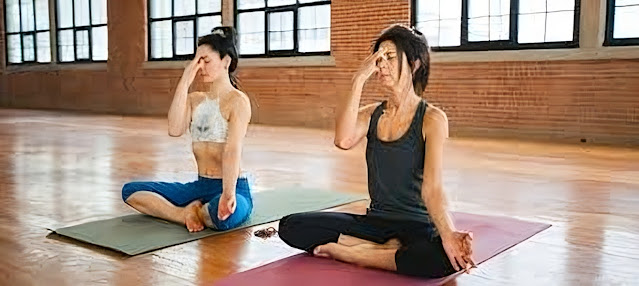 |
| Pranayama Yoga |
Cultivating Consistency: Nurturing Your Pranayama Practice
A consistent Pranayama practice is a gateway to experiencing the profound benefits of conscious breath control. Just as the breath flows rhythmically, building a routine requires intention, commitment, and patience. Here are practical tips to help you weave Pranayama into your daily life:
1. Set Aside a Specific Time Each Day:
Choose a time that aligns with your natural rhythms. Mornings often offer a serene canvas for practice, as your mind is fresh and your body receptive. Alternatively, you might find evenings more suitable for unwinding. The key is consistency – selecting the same time each day establishes a routine that becomes a nourishing habit.
2. Create a Calm and Dedicated Space for Practice:
Designate a corner of your home as your sacred Pranayama space. Keep it clutter-free and adorned with items that invoke tranquility – a cushion, a soft mat, perhaps a candle or a soothing image. This space becomes a haven where you can retreat, unfurl your breath, and reconnect with your essence.
3. Be Patient and Gradually Increase Practice Duration:
Rome wasn't built in a day, and neither is a profound Pranayama practice. Start with a manageable duration – even 5-10 minutes – and gradually extend it as you become more comfortable. The aim is to cultivate quality over quantity. As your breath awareness deepens, you'll naturally find your practice expanding.
4. Use Reminders:
In our fast-paced lives, it's easy to get absorbed in tasks and forget our intentions. Set gentle reminders – an alarm on your phone, a post-it on your mirror – to nudge you towards your practice time. These reminders serve as whispers of self-care amidst the clamor of daily life.
5. Embrace Flexibility:
While consistency is key, life is dynamic. There might be days when your routine shifts due to unforeseen circumstances. On such days, be kind to yourself. Rather than abandoning your practice entirely, find pockets of time for even a brief Pranayama session.
6. Find Joy in the Journey:
Your Pranayama practice is a voyage of self-discovery and growth. Embrace it with an open heart and a playful spirit. Celebrate the small victories – the days you dedicated to your breath, the moments of stillness you found amidst chaos.
7. Mindful Breathing Beyond the Mat:
Remember, Pranayama is not confined to your mat or cushion. Infuse conscious breathing into your daily routine – during your commute, while waiting in line, or even in moments of stress. By integrating mindful breathing into your life, you amplify its benefits.
8. Seek Community and Support:
Connect with like-minded individuals who are also on a journey of self-care and self-discovery. Joining a yoga class or an online community can provide encouragement, accountability, and a shared space to discuss your experiences and challenges.
Cultivating a consistent Pranayama practice is a gift you offer yourself – a commitment to nurturing your well-being, one breath at a time. It's a practice of self-love that infuses each moment with mindfulness and vitality. As you embark on this journey, remember that every conscious breath is a step towards aligning your body, mind, and spirit in harmonious unity.
Conclusion
Embracing Pranayama: A Journey of Self-Discovery and Inner Balance
As we conclude our exploration of Pranayama Yoga, we've uncovered a world of wisdom within the simple act of conscious breath control. Let's recap the essence of Pranayama's significance and the transformative power it holds:
- Harnessing the Life Force Within:
Pranayama is the art of connecting with the life force energy that animates every cell of our being. Through intentional breath control, we influence the flow of Prana, revitalizing our body, mind, and spirit.
- Bridging Breath and Well-Being:
Breath isn't just oxygen; it's a bridge between our inner and outer worlds. Pranayama harmonizes the breath, calms the mind, and promotes holistic well-being by balancing the nervous system and enhancing our body's vitality.
- An Essential Thread in Yoga's Fabric:
Pranayama isn't a standalone practice; it's an integral part of the yogic journey. It enhances asana practice, deepens meditation, and invites us to explore the realms of consciousness.
- The Transformative Effects Await:
We encourage you to step onto this path of transformation. Dive into the rhythmic world of Pranayama, where each breath is an invitation to self-awareness, clarity, and serenity. With each inhalation and exhalation, you'll discover the potential to recalibrate your energy, soothe your mind, and elevate your perspective.
- A Journey of Self-Discovery:
Pranayama isn't about perfecting techniques; it's about the journey within. As you practice, listen to the whispers of your breath – they carry the secrets of your inner world. The practice unfolds like chapters of a book, revealing the layers of your being and guiding you towards the sanctuary of self-discovery.
In a world brimming with distractions, Pranayama offers an oasis of stillness. It's a reminder that amid the chaos, you hold the power to center yourself through the rhythm of breath. Pranayama becomes your compass, guiding you towards inner balance, where the external fluctuations can't disturb your tranquility.
As you close this chapter, remember that every inhale is an opportunity to infuse your life with vitality, and every exhale is a chance to release what no longer serves you. May your journey with Pranayama be one of grace, resilience, and deep self-connection. Embrace the transformative magic of conscious breathing, and let it illuminate the path to the radiant, authentic you.



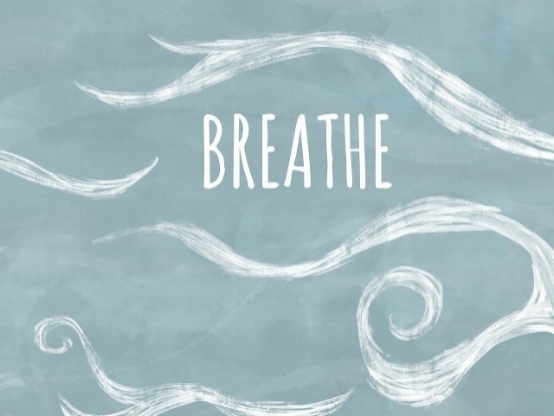
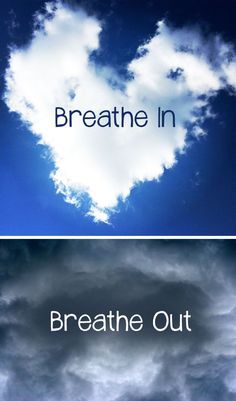
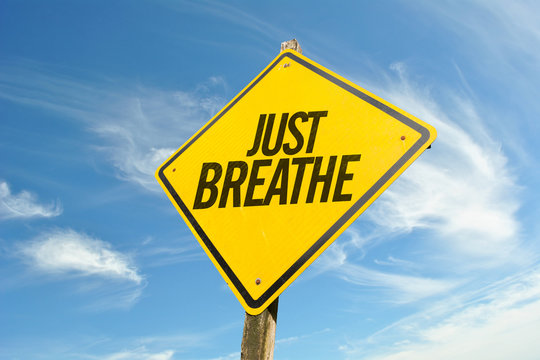


-M-uS3IeIN-transformed.jpeg)


